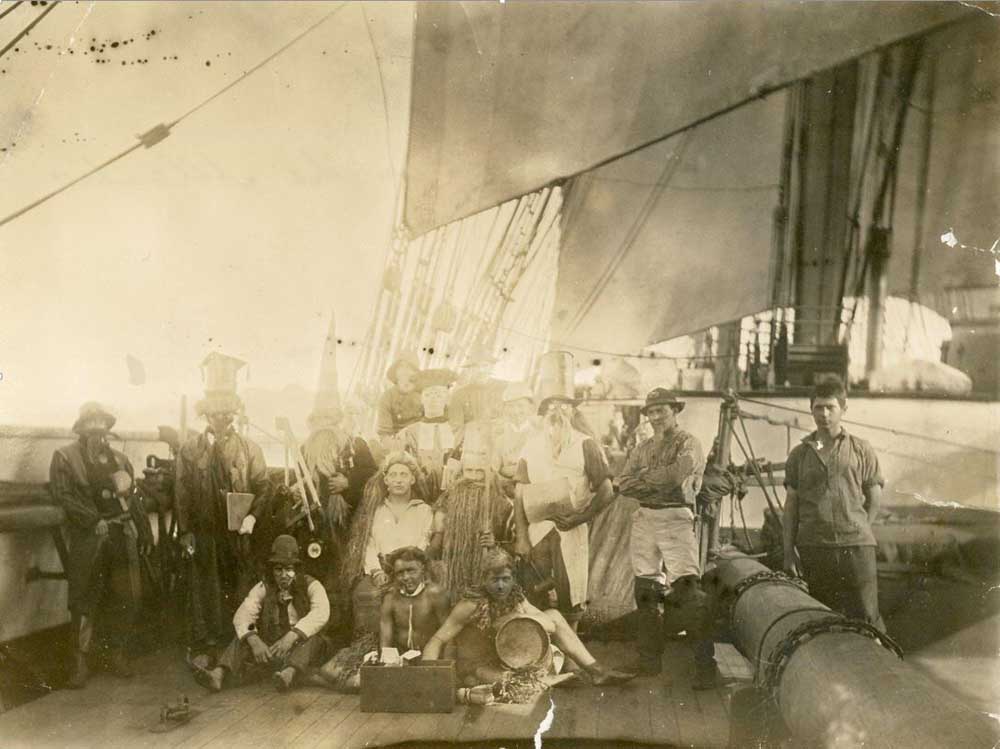Weekend Break: Sailing the world
Published 5:00 pm Friday, November 13, 2020

- A crew dressed up for their equatorial line crossing ceremony in the early 1900s.
Line-crossing ceremonies are a centuries-old tradition in the maritime world. Some people say the earliest line-crossing ceremonies date back to the age of the Vikings, while others believe modern-day ceremonies originate from religious rituals on ships during the 1600s.
Each line-crossing ceremony is a rite of passage that celebrates a sailor’s progress. Ceremonies mark the passage of key waterways and geographic regions around the world. There are initiations for crossing the equator, prime meridian, international date line, Arctic Circle, Antarctic Circle and more. Ships celebrate line-crossing ceremonies along the equator most often.
The equatorial ceremony is what is generally referred to as “crossing the line.” The more experienced sailors on board — known as “shellbacks” — dress up as members of King Neptune’s Court to induct their peers into the “Solemn Mysteries of the Ancient Orders of the Deep.” Members of the court include King Neptunus Rex (typically played by the most senior crew member), Davy Jones, Queen Amphitrite, and an assortment of jesters, scribes and doctors.
Those who are being inducted — known as “pollywogs” or “wogs” — are subpoenaed to stand before the Royal Court and are given tasks to complete as part of their initiation. The assignments can be embarrassing pranks, obstacles and chores.
For years, not much thought was given to the safety of pollywogs being inducted. People were thrown overboard or forcefully dragged around the ship. There are many stories of sailors who were seriously injured or died from aggressive hazing.
Today, sailors strike a chord between time-honored, playful antics and more hazardous tasks. There are more regulations on what is allowed — and ceremonies are intended to be morale-boosting for the crew.
The pranks pollywogs receive today might include getting their heads shaved in funny styles and being smothered in raw eggs.
At the end of the rituals, everyone on board the ship is officially considered a “shellback” and is a member of King Neptune’s Court. The crew receives certificates announcing their accomplishment.
Another prominent line ceremony — particularly for sailors in the Pacific Ocean — is crossing the international date line. The line is located at the 180th meridian — exactly halfway around the world from the prime meridian in Greenwich, England. This imaginary line runs between the North Pole, from the South Pole , and divides the Eastern and Western hemispheres. On one side of the line is one calendar day. On the other side of the line is the next day.
Sailors who cross the line are inducted into the Domain of the Golden Dragon. When a ship traveling west crosses the 180th meridian, it enters the “Dragon’s Domain” and will remain there throughout its time in the West Pacific.
The Columbia River Maritime Museum has encountered the Domain of the Golden Dragon through the museum’s Miniboat Program. The program, which is a course for 5th- to 7th-grade classes in the Pacific Northwest, guides students through the process of designing, building, launching and tracking their own unmanned, GPS-equipped boats on a journey across the Pacific.
In the three years since the program kicked off, four miniboats out of the 27 launched have crossed over the International Date Line. Each time a boat makes this voyage, they are inducted into the Domain of the Golden Dragon and presented with certificates marking the occasion.









